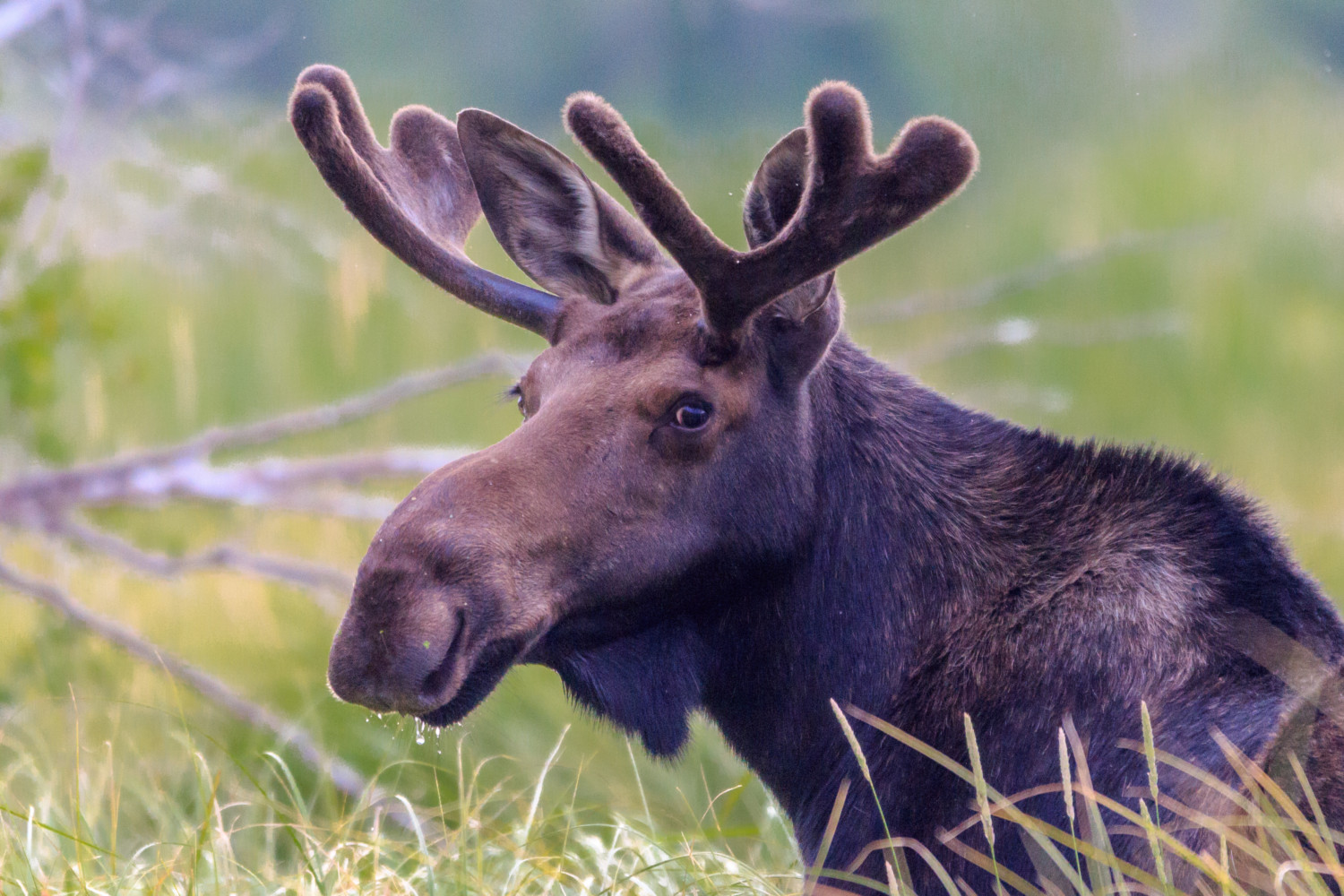Did you know that moose shed their antlers? Shedding, or “casting,” occurs each winter when male moose shed their antlers.
But even though male cervids (which are hoofed mammals in the deer family, including deer, moose and elk) drop their antlers each winter season, it’s still a rare thing to catch on film. That’s why the Bogert family in Alaska was so excited when their Ring camera caught footage of a moose shedding his beautiful antlers.
They quickly shared the video to TikTok and it went viral. To date, it has 20.2 million views and 2.7 million likes.
@akfattruck Check this moose shedding antlers on camera at my brother and sister in law house! #fyp #viral #moose #wildlife #video #alaska #animals #epic #adventure #wildlifelover #deer #moosehunt ⬠original sound – AK Fat Truck
Later, the account posted a shorter, closer-up version set to Taylor Swift’s “Shake It Off.” In both videos, the moose seems to effortlessly release his antlers, leaving them on the snowy ground outside the Bogerts’ house and dashing off camera.
@akfattruck Moose shedding antlers at same time, RARE! #moose #mooseshed #shed #viral #fyp #alaska #roundtwo #akfattruck ⬠Shake It Off – Taylor Swift
“I knew it was rare because all my hunting friends said they’ve never seen it in real life, let alone being caught on video,” Chance Bogert told People, going on to say that he retrieved the antlers from his yard and brought them into his house.
Why do male cervids cast off their antlers each year? Simply put: because those things are heavy. Biologists estimate that moose antlers weigh up to 60 pounds. By losing the excess poundage, mammals like moose and elk can reserve their much-needed energy to help them weather the frigid winter months when food can be scarce.
Antler growth is regulated by testosterone, researchers say, and decreased daylight triggers lower testosterone production. This weakens the connections between the antlers and the skull, eventually causing them to fall off.
“Growing antlers is costly,” explains ecological expert Melissa Clark of the U.S. Fish and Wildlife Service. “In poor habitat, a buck’s bone density will decrease as his body will take the calcium and put it toward hardening antlers. Bull moose will spend a quarter of the energy from the 35 pounds of vegetation they eat each day toward growing antlers.”

In addition, antlers aren’t as necessary during the winter months. Cervids use antlers to help them lure mates as well as to help them battle off their competition for mates. But winter isn’t mating season for moose. Their mating season varies based on location, but generally takes place in autumn. So, they can afford to lose their alluring antlers during the frigid months.
Weeks after losing their antlers, male cervids will grow a new antler bud. Then, their velvet, which is the soft fur that is actually an organ on the top of the male’s head, begins to reform. You can see it on the moose in the image above. (Fun fact: Deer velvet is the only mammal organ that can continuously regenerate … no wonder researchers have studied deer velvet for years to learn more about how this amazing transformation works and how we can apply it to fields like regenerative medicine and wound healing.)
Moose can experience up to a pound of antler growth per day, so by the time rutting season rolls around, male moose have impressive racks with which to impress their mates.
By Bridget Sharkey, for Scripps News.
Scripps News is the nation’s only free 24/7 national news network. You can find Scripps News using your TV’s digital antenna or stream for free. See all the ways you can watch Newsy here: https://scrippsnews.com/where-to-watch/
This story originally appeared on Simplemost. Check out Simplemost for additional stories.


